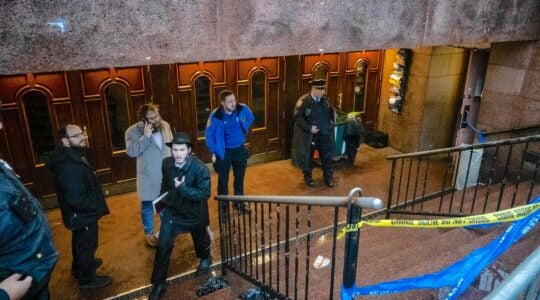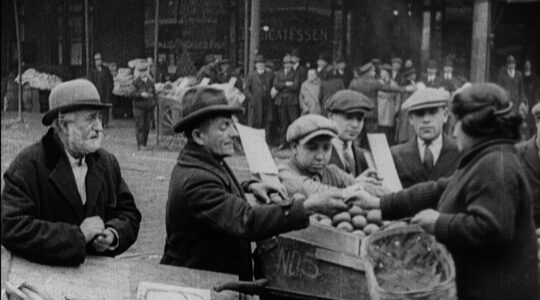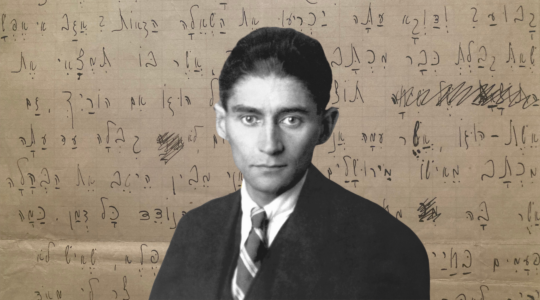The Palestiniansí first and greatest propaganda coup of the war was the shooting of Muhammed Al-Dura, the boy whose widely seen death in his fatherís arms at the very beginning of the war (Sept. 30, 2000) established the basic Palestinian legend: the heavily armed, trigger-happy Zionists killing the helpless, unarmed Palestinian child.
Filmed by an Arab cameraman, the slow motion murder of the child crouching in fear and then crumbling in his fatherís arms was broadcast around the world, and appeared on the front pages of major newspapers such as The New York Times. The Atlantic Monthly (June) says the image of the boyís death became the ìpietaî of the Arab world, appearing on postage stamps, being invoked by Osama bin Laden as one of the answers to the proverbial American question, ìWhy do they hate us?î
The image of the shot child, writes the Atlanticís James Fallows, became a rallying point for the Arab world comparable in iconic stature to the World Trade Center for us.
Fallows suggests that the shooting evoked the old ìblood libel,î the classic anti-Semitic war cry that launched a thousand pogroms because Jews supposedly needed and wanted the blood of gentile children. At the time, Bob Simon said on CBSís 60 Minutes that the boyís death was ìone of the most disastrous setbacks Israel has suffered in decades.î The Atlantic quotes a typical Israeli reaction in 2000, a Haifa professor who said that when he first heard of Al-Dura, ìit made me sick to think this was done in my name.î
The initial IDF investigation found that ìit could very well beî that the bullets that struck Al-Dura originated from an IDF soldier. Many Zionists were indeed proud that Israel was so quick to take responsibility and grieve along with the world. In fact, Israelis were so busy feeling either guilty or noble that it didnít realize the whole thing was a sucker punch.
Echoing several earlier and more obscure investigations, the lengthy Atlantic piece reports that it just isnít true that Israeli soldiers shot Al-Dura. There is ìpersuasive evidenceî that the fatal shots came from Palestinians.î The Atlantic even raised the questions of whether the boy was even shot at all, and that the boy who was buried may not have been Al-Dura, so complete was the event a theatrical staging ó not unlike the staging and the wailing surrounding the Jenin massacre in 2002 that proved to be no massacre at all.
Nevertheless, the Al-Dura case successfully diverted attention from the Palestinianís premeditated launching of the war to the image of Israeli cruelty. Like Hitlerís Reichstag fire, it almost doesnít matter that the truth comes out in the end, as much as that truth was muddied in the beginning, when it mattered.
Thirty-three months into the war, Israelis are wondering how terror managed to defeat them. On the one hand, Zionist leaders tell us that terror hasnít won, everything in Israel is normal and safe. Zeev Begin, in Haaretz (June 9), writes that ìThe cafes are open, even those that were shattered to pieces. The shopping malls are packed with people, even the malls that were blown up. People take the bus to work and thousands of picnickers swarm to the nature sites. Couples are marrying, children are being born. The majority of the public agrees with the statements by Israelís defense ministers that the countryís citizens are showing excellent resolve in the face of terrorism.î Except, adds the son of Menachem Begin, itís simply ìnot true.î What happened to Israel, concludes Begin, is that ìThe horrors of repeated murders intimidated the public and wore it down. Ö The only consistent element in the Israeli position has been the constant retreat from its stated positions on issues that are critical to the countryís future. Evidently, terrorism works,î says Begin. ìFaced with force, ultimately, the Jews yield.î
An editorial in Yediot Achronot (May 27) similarly argued, ìFrom the Palestinian point of view, the second intifada ended in victory. Without the Al-Aqsa intifada, without the horrific terror, without the destruction caused by the attacks, would a Likud government have adopted the idea of establishing an independent Palestine?î
Although the road map stipulates that the Palestinians must end the terror, many good and decent people are arguing that that terror will continue and Israel must live with it. In the New York Daily News (June 4) columnist Stanley Crouch writes that Israelis can move forward ìif they are told up-front what to expect Ö as much [terrorist] murder as possibleî from those seeking to stop the peace. Sharon, writes Crouch, should be the man who ìsteps up and leads his people through a Red Sea of murder to a promised land of peace.î But the Daily News editorial of that same day contradicted its columnist, arguing that the roadmap is unequivocal in demanding an end to violence and terrorism, not something Israel should have to tolerate.
June 5 was the anniversary of Robert F. Kennedyís assassination and a surprising number of publications didnít bother to point out that assassin Sirhan Sirhan was Palestinian, let alone the first Palestinian terrorist to kill on American soil. In the Arab world, though, the Beirut Daily Star (June 3) says that Kennedyís death was an early ìwarningî to America about ìthe costsî of helping Israel, even if 1968 Israel pre-dated settlements or the weight of prolonged occupation. The American media reacted to Kennedyís death by suggesting that Sirhan was a lone gunman, that the problem was too much violence in American society, not violence in Arab society. The Beirut article points out that Sirhan, who shot Kennedy on the first anniversary of the 1967 Six-Day War, was identified in 1968 papers as a Jordanian because Jordan had been occupying, for 19 years, that part of Jerusalem where Sirhan grew up. Sirhan ìclearly saw himself,î says the Beirut Star, ìlike todayís suicide bombers, as a fighter for his people.î One month after RFKís death came a Palestinian hijacking of an Israeli passenger jet. It was from Sirhan, says the Beirut article, that Palestinians began to think that ìhigh-profile violence might advance their cause.î Thirty-five years later, whoís to say it hasnít?
The New York Jewish Week brings you the stories behind the headlines, keeping you connected to Jewish life in New York. Help sustain the reporting you trust by donating today.




